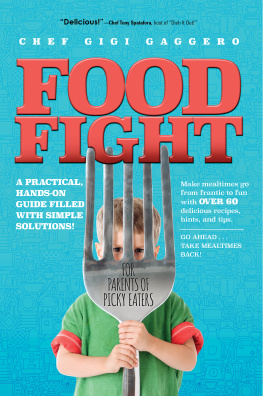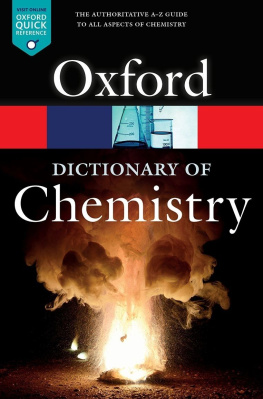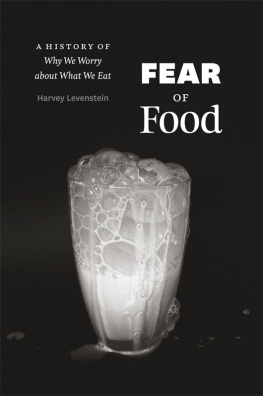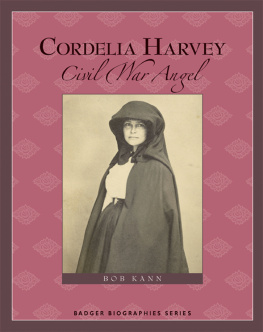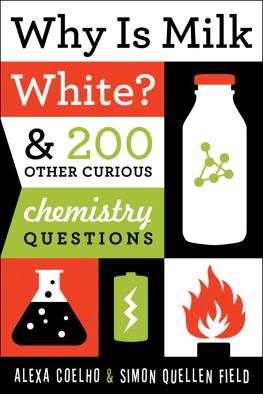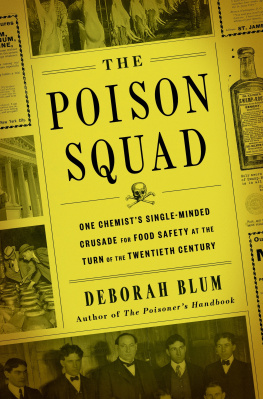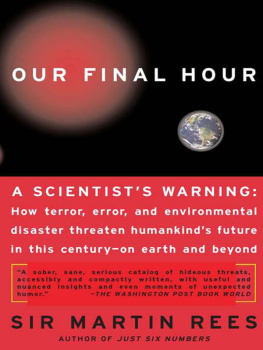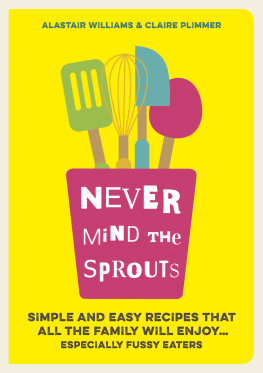Jonathan Rees - The Chemistry of Fear: Harvey Wileys Fight for Pure Food
Here you can read online Jonathan Rees - The Chemistry of Fear: Harvey Wileys Fight for Pure Food full text of the book (entire story) in english for free. Download pdf and epub, get meaning, cover and reviews about this ebook. year: 2021, publisher: JHU Press, genre: Detective and thriller. Description of the work, (preface) as well as reviews are available. Best literature library LitArk.com created for fans of good reading and offers a wide selection of genres:
Romance novel
Science fiction
Adventure
Detective
Science
History
Home and family
Prose
Art
Politics
Computer
Non-fiction
Religion
Business
Children
Humor
Choose a favorite category and find really read worthwhile books. Enjoy immersion in the world of imagination, feel the emotions of the characters or learn something new for yourself, make an fascinating discovery.

- Book:The Chemistry of Fear: Harvey Wileys Fight for Pure Food
- Author:
- Publisher:JHU Press
- Genre:
- Year:2021
- Rating:5 / 5
- Favourites:Add to favourites
- Your mark:
- 100
- 1
- 2
- 3
- 4
- 5
The Chemistry of Fear: Harvey Wileys Fight for Pure Food: summary, description and annotation
We offer to read an annotation, description, summary or preface (depends on what the author of the book "The Chemistry of Fear: Harvey Wileys Fight for Pure Food" wrote himself). If you haven't found the necessary information about the book — write in the comments, we will try to find it.
The Chemistry of Fear: Harvey Wileys Fight for Pure Food — read online for free the complete book (whole text) full work
Below is the text of the book, divided by pages. System saving the place of the last page read, allows you to conveniently read the book "The Chemistry of Fear: Harvey Wileys Fight for Pure Food" online for free, without having to search again every time where you left off. Put a bookmark, and you can go to the page where you finished reading at any time.
Font size:
Interval:
Bookmark:
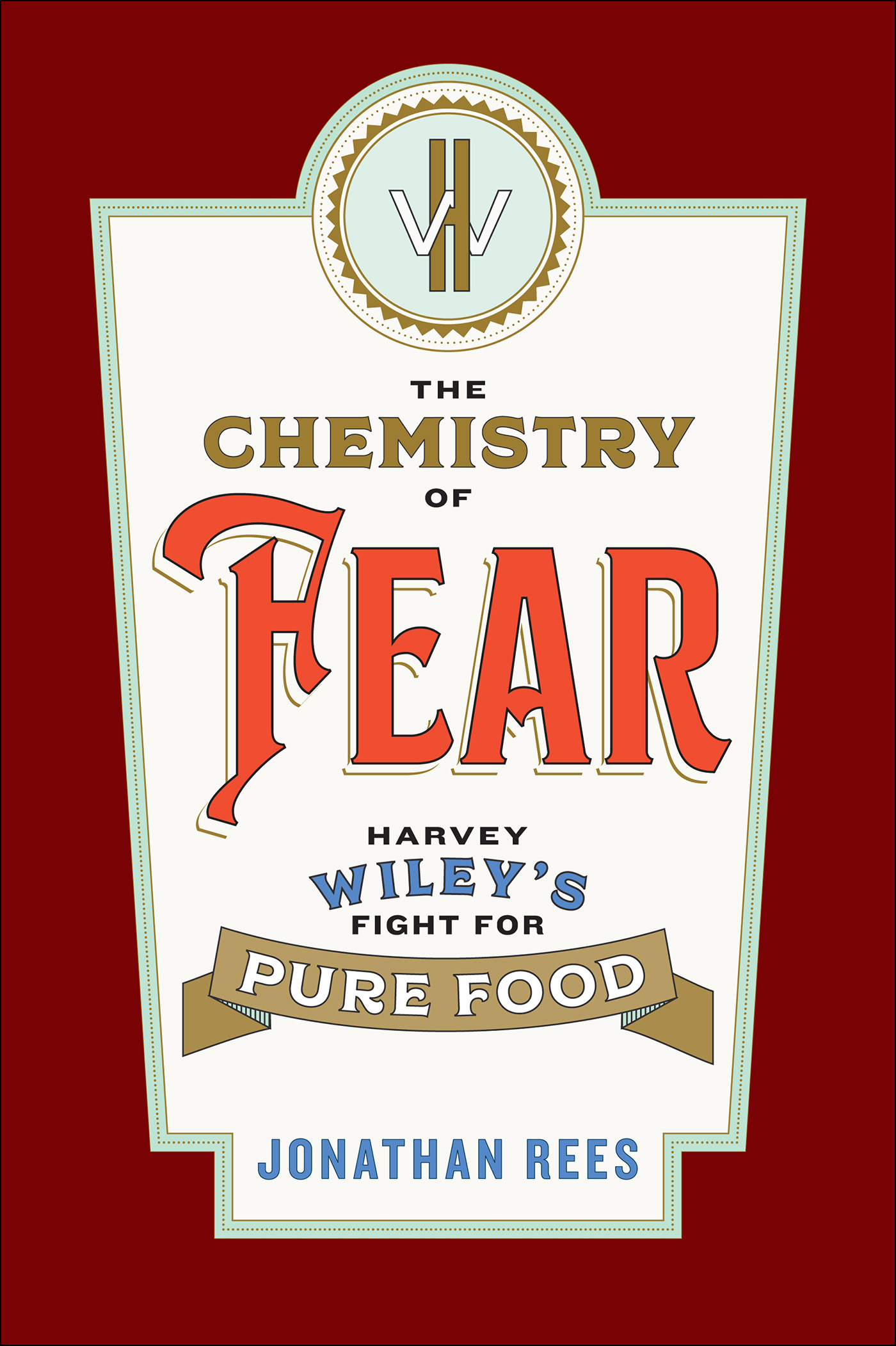
THE
CHEMISTRY
OF
FEAR

HARVEY WILEY C. 1910
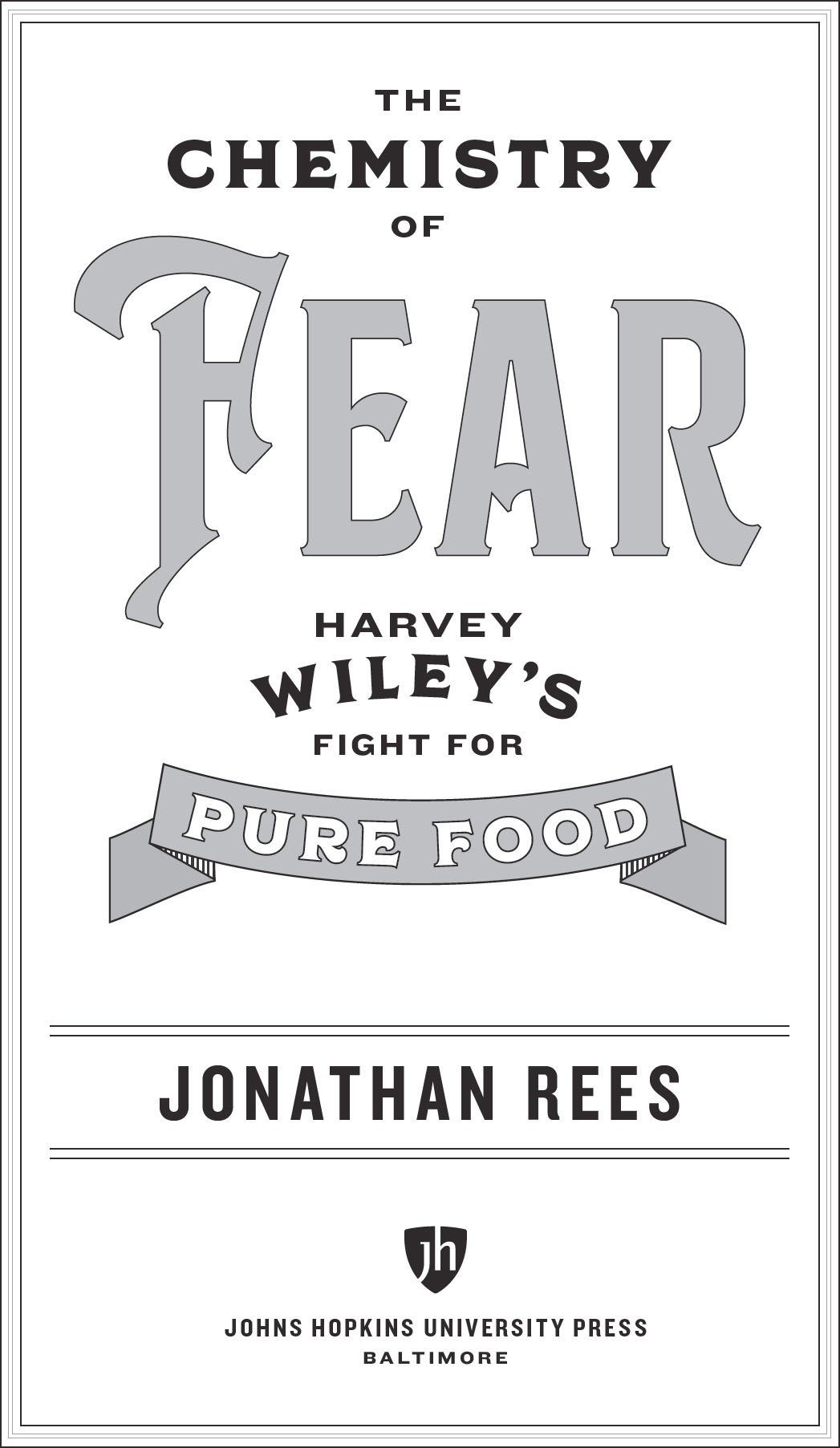
2021 Johns Hopkins University Press
All rights reserved. Published 2021
Printed in the United States of America on acid-free paper
2 4 6 8 9 7 5 3 1
Johns Hopkins University Press
2715 North Charles Street
Baltimore, Maryland 21218-4363
www.press.jhu.edu
Library of Congress Cataloging-in-Publication Data
Names: Rees, Jonathan, 1966 author.
Title: The chemistry of fear : Harvey Wileys fight for pure food / Jonathan Rees.
Description: Baltimore : Johns Hopkins University Press, 2021. | Includes bibliographical references and index.
Identifiers: LCCN 2020013524 | ISBN 9781421439952 (hardcover) | ISBN 9781421439969 (ebook)
Subjects: LCSH: Wiley, Harvey Washington, 18441930. | FoodUnited StatesSafety measures. | Food additivesSafety regulationsUnited StatesHistory. | Food supplyUnited States.
Classification: LCC RA601 .R42 2021 | DDC 363.19/260973dc23
LC record available at https://lccn.loc.gov/2020013524
A catalog record for this book is available from the British Library.
Special discounts are available for bulk purchases of this book. For more information, please contact Special Sales at specialsales@press.jhu.edu.
Johns Hopkins University Press uses environmentally friendly book materials, including recycled text paper that is composed of at least 30 percent post-consumer waste, whenever possible.
THE
CHEMISTRY
OF
FEAR
Who Was Harvey Wiley?
O N DECEMBER 22, 1902, six young men sat down for breakfast in the basement of a US Department of Agriculture (USDA) building in Washington, DC. This area of the building would become the site of a series of experiments to test the effects of common food preservatives on human health. The men all pledged to eat every meal (in fact, every bite of food or drink) at this table for the duration of this first experiment. On this day, the participants ate significant amounts of borax, a common preservative for meat and dairy products. The first six experimental test subjects, along with the six who quickly followed them, all worked for the USDA.
Staff carefully weighed all the food they fed the subjects before giving it to them. Then they weighed what remained on the mens plates afterward. Most important, scientists recovered, weighed, and analyzed the subjects urine and feces so they could determine how much of the borax remained in their bodies at the end of the experiment. These were hardly the first experiments designed to test the effects of chemical preservatives on human health, but previous experiments had involved animals. This was the first such test to use a large group of human subjects. Six similar experiments testing other preservatives would follow over the next five years.

FIGURE I.1 Subjects of the infamous Poison Squad experiment eating a meal with Dr. Harvey Wiley standing over them. The sign in the corner reflects the kind of humor generated by the experiment among both its participants and the general public.
Courtesy US Food and Drug Administration
These experiments attracted an enormous amount of media attention because they involved feeding so much of these seemingly dangerous substances to people. The subjects quickly came to be known as the Poison Squad. The Poison Squad experiments were a new approach to studying an old issue: food adulteration. Food producers had been tampering with foodmost notably, adding cheaper ingredients without the purchasers knowledge to increase profitsfor centuries by the time the Poison Squad experiments began. We tend to think of adulteration in terms of obviously dangerous chemicals getting slipped into everyday foods, but this picture reflects the modern perspective associated with tragic industrial mistakes. During the late nineteenth century, as the mass production of food took off, adulteration as a form of deception was far more common.
The industrialization of food manufacturing made the problem of food adulteration particularly pressing for two reasons. First, the increasing physical distance between the manufacturers and consumers of food and the opaque nature of the production process made it far easier for producers to cheat consumers by mixing in cheaper, and sometimes dangerous, ingredients to save on production costs. Second, the demands associated with industrializationparticularly the need to preserve foods as they traveled to markets farther from their point of productionmeant that producers increasingly added ingredients to preserve these foods for much longer time periods, even though these preservatives had never been in food products before. These additives gave the Poison Squad its name, even though most of them were not really poisonous at all.
The Poison Squad experiments, which lasted from 1902 to 1907, were designed to help scientists make definitive conclusions about the effects of common preservatives on human health.
The man behind the Poison Squad experiments was Dr. Harvey Washington Wiley (18441930). A native of Indiana, Wiley was a chemist, a medical doctor (though he never practiced), an author, and a civil servant who ran the Division (later Bureau) of Chemistry at the USDA from 1883 to 1912. This office was the forerunner of the modern Food and Drug Administration. The Poison Squad experiments were Wileys attempts to demonstrate that preservatives should be treated as unwelcome adulterantseven poisonsrather than necessary additives needed to make the mass production of food economically viable.
The experiments on the Poison Squad were a turning point in Wileys life and career. They convinced him of the paramount importance of health and safety with respect to food adulteration of any kind. Those experiments also transformed him from a follower to a leader inside the broader pure food movement of that era. Initially, Wileys well-publicized findings scared much of the public into believing that new food additives like borax and sodium benzoate were threats to their health. This fear generated support both for the passage of the PFDA and for a strict interpretation of that law, which Wiley favored. The work of the Poison Squad made Harvey Wiley one of the most famous men in America. Before long, newspapers could simply mention Dr. Wiley in a headline, and everyone in America knew to whom they were referring. Wiley would be associated with the fight for pure food for the rest of his long life.
From the passage of the PFDA in 1906 until he resigned from the Department of Agriculture in 1912, Wiley engaged in a series of fierce bureaucratic battles to determine which additives should be considered acceptable under the law. Then, as an editor and columnist at the magazine Good Housekeeping from 1912 to his death in 1930, Wiley continued to exercise enormous influence over what Americans ate. While it is common to think of the fight for pure food as a single struggle, Wiley fought many battles to determine what purity meant in foods and drugs of all kinds. Although Wiley came to believe that he had lost the overall fight for strict enforcement of the pure food law, his arguments and actions while enforcing the act nonetheless changed how manufacturers made and marketed a wide range of foods and drugs.
Font size:
Interval:
Bookmark:
Similar books «The Chemistry of Fear: Harvey Wileys Fight for Pure Food»
Look at similar books to The Chemistry of Fear: Harvey Wileys Fight for Pure Food. We have selected literature similar in name and meaning in the hope of providing readers with more options to find new, interesting, not yet read works.
Discussion, reviews of the book The Chemistry of Fear: Harvey Wileys Fight for Pure Food and just readers' own opinions. Leave your comments, write what you think about the work, its meaning or the main characters. Specify what exactly you liked and what you didn't like, and why you think so.

